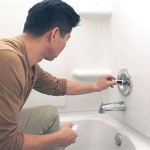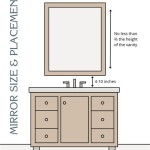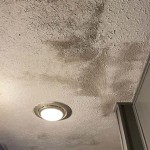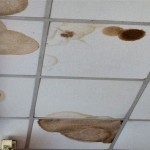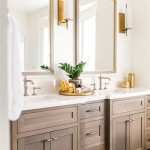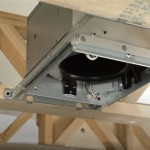Understanding Bathroom Vanity Tops (Without Sink)
Bathroom vanity tops, specifically those sold without an integrated sink, represent a significant component of bathroom design and functionality. This distinction allows for greater customization and flexibility in bathroom renovations or new construction. Selecting a vanity top without a sink provides homeowners and designers the opportunity to choose a sink that perfectly matches their aesthetic preferences and functional needs, rather than being limited to pre-paired options. This article explores various aspects of bathroom vanity tops without sinks, covering materials, sizes, styles, installation considerations, and maintenance.
The primary purpose of a bathroom vanity top is to provide a durable and aesthetically pleasing surface for a sink, toiletries, and other bathroom necessities. Without an integrated sink, the vanity top becomes a blank canvas upon which a separate vessel sink, undermount sink, or other sink style can be installed. This separation allows for a unique design statement and the freedom to select a sink that best suits the user's needs, such as a deep basin for laundry or a wide trough sink for multiple users.
The absence of an integrated sink also simplifies the replacement of either the vanity top or the sink itself. Should the sink become damaged or outdated, it can be easily replaced without affecting the vanity top, and vice versa. This modularity offers long-term cost savings and convenience compared to integrated vanity tops where damage to one component necessitates replacing the entire unit.
Material Options for Bathroom Vanity Tops
The selection of material for a bathroom vanity top without a sink is a critical decision, impacting both the aesthetics and the durability of the installation. Each material offers a distinct set of characteristics that must be weighed against the homeowner's budget, lifestyle, and design preferences. Popular choices include granite, quartz, marble, solid surface materials, wood, laminate, and concrete.
Granite: Granite is a natural stone prized for its durability and unique patterns. Each slab of granite is different, offering a one-of-a-kind look for the bathroom. Granite is highly resistant to heat, scratches, and stains when properly sealed. However, it is a porous material and requires regular sealing to prevent the absorption of liquids, which can lead to discoloration or staining. The cost of granite can range from moderate to high, depending on the rarity and quality of the stone.
Quartz: Quartz is an engineered stone composed of crushed quartz crystals mixed with resin and pigments. This composition results in a non-porous surface that is highly resistant to stains, scratches, and bacteria. Quartz is also available in a wide range of colors and patterns, including options that mimic the look of natural stone. Unlike granite, quartz does not require regular sealing, making it a low-maintenance option. The cost of quartz is generally comparable to granite, with some premium options being more expensive.
Marble: Marble is a luxurious natural stone known for its elegant veining and smooth texture. It is a popular choice for high-end bathroom designs. However, marble is a softer and more porous material than granite or quartz, making it more susceptible to scratches, stains, and etching from acidic substances. Regular sealing and careful maintenance are essential to preserve the beauty of marble vanity tops. Marble is typically a more expensive option than granite or quartz.
Solid Surface Materials: Solid surface materials, such as Corian, are synthetic materials made from acrylic or polyester resins and mineral fillers. These materials are non-porous, seamless, and available in a wide array of colors and patterns. Solid surface vanity tops are resistant to stains, scratches, and bacteria, and can be easily repaired if damaged. They are also relatively affordable compared to natural stone options. However, they may not have the same luxurious look and feel as granite or marble.
Wood: Wood vanity tops offer a warm and natural aesthetic to the bathroom. Common wood species used for vanity tops include oak, maple, cherry, and walnut. Wood vanity tops require a durable finish to protect them from moisture and water damage. Regular sealing or varnishing is essential to prevent warping, cracking, and rot. The cost of wood vanity tops can vary widely depending on the type of wood, the quality of the finish, and the complexity of the design.
Laminate: Laminate vanity tops are made from layers of paper or fabric bonded to a particleboard or MDF core and covered with a decorative layer. Laminate is an affordable and versatile option available in a wide range of colors, patterns, and textures. However, laminate is not as durable as other materials and is susceptible to scratches, stains, and water damage. It is also difficult to repair if damaged. Laminate is a budget-friendly option suitable for low-traffic bathrooms.
Concrete: Concrete vanity tops offer a modern and industrial aesthetic to the bathroom. Concrete is a durable and versatile material that can be customized with various colors, textures, and finishes. However, concrete is a porous material and requires sealing to prevent staining and water damage. It can also be prone to cracking if not properly reinforced. Concrete vanity tops can be heavy and require specialized installation. The cost of concrete vanity tops can range from moderate to high, depending on the complexity of the design and the level of customization.
Sizing and Style Considerations
The size and style of a bathroom vanity top without a sink must be carefully considered to ensure a functional and aesthetically pleasing design. The size of the vanity top should be proportional to the size of the bathroom and the available space. The style of the vanity top should complement the overall design of the bathroom and reflect the homeowner's personal preferences.
Size: The standard depth for a bathroom vanity top is typically between 19 and 22 inches. The width of the vanity top will vary depending on the size of the vanity cabinet and the desired number of sinks. Single-sink vanity tops typically range from 24 to 48 inches in width, while double-sink vanity tops can range from 60 to 72 inches or more. It is important to allow adequate space around the vanity for comfortable movement and access to the sink.
Style: The style of the vanity top should complement the overall design of the bathroom. Common styles include traditional, contemporary, modern, farmhouse, and transitional. Traditional vanity tops often feature ornate details, such as raised-panel doors, carved moldings, and decorative hardware. Contemporary vanity tops typically have clean lines, minimalist designs, and sleek finishes. Modern vanity tops often incorporate geometric shapes, bold colors, and innovative materials. Farmhouse vanity tops feature rustic elements, such as distressed finishes, reclaimed wood, and apron-front sinks. Transitional vanity tops blend elements of traditional and contemporary styles to create a balanced and versatile look.
The choice of sink style will also influence the overall look of the vanity top. Vessel sinks sit on top of the vanity top, creating a dramatic focal point. Undermount sinks are installed beneath the vanity top, creating a seamless and clean look. Drop-in sinks are installed into a pre-cut hole in the vanity top, offering a more traditional and budget-friendly option.
The edge profile of the vanity top can also affect its style. Common edge profiles include bullnose, ogee, eased, and square. Bullnose edges are rounded and soft, while ogee edges are more decorative and ornate. Eased edges are slightly rounded for safety and comfort, while square edges are sharp and modern.
Installation and Maintenance of Vanity Tops (Without Sink)
Proper installation and regular maintenance are essential to ensure the longevity and beauty of a bathroom vanity top without a sink. Installation typically involves attaching the vanity top to the vanity cabinet, installing the sink, and connecting the plumbing. Maintenance includes regular cleaning, sealing (if applicable), and addressing any minor repairs promptly.
Installation: Installation of a vanity top without a sink can be a DIY project for experienced homeowners, but it is often best left to professionals. The process typically involves the following steps:
- Preparing the vanity cabinet: Ensure the vanity cabinet is level and securely attached to the wall.
- Measuring and cutting: Measure and cut the vanity top to the correct size, if necessary. Cut the hole for the sink according to the manufacturer's instructions, if required.
- Attaching the vanity top: Apply a bead of silicone caulk to the top of the vanity cabinet and carefully place the vanity top on top. Secure the vanity top to the cabinet with screws or adhesive, if necessary.
- Installing the sink: Install the sink according to the manufacturer's instructions. Connect the drain and water supply lines.
- Sealing: Apply a bead of silicone caulk around the sink and along the back of the vanity top to seal any gaps and prevent water damage.
Maintenance: Regular maintenance is essential to keep the vanity top looking its best. The specific maintenance requirements will vary depending on the material of the vanity top.
- Cleaning: Clean the vanity top regularly with a mild soap and water solution. Avoid using abrasive cleaners or harsh chemicals, which can damage the surface.
- Sealing: If the vanity top is made of a porous material, such as granite or marble, it will need to be sealed regularly to prevent staining and water damage. Follow the manufacturer's instructions for sealing.
- Repairing: Address any minor repairs promptly to prevent further damage. Repair scratches, chips, or cracks as soon as possible.
Choosing a bathroom vanity top without a sink provides an opportunity for personalization and customization. Careful consideration of material, size, style, installation, and maintenance will ensure a beautiful and functional addition to any bathroom. Each of these factors plays a critical role in creating a space that reflects personal style and meets functional needs.

Yasinu Yn10 36 In W X 22 D 35 H Bath Vanity Cabinet Only Without Top Gray Yn11036lgr The Home Depot

Diy Vanity Tops For Your Bathroom

36 Bathroom Vanity Table Only Without Sink Top Vintage Storage Shelf And Drawer Antique White In 2024 Base Modern Freestanding

Only Vanity Top Montary Bathroom 31 Inch Carrara White Engineered Stone With Ceramic Sink And Back Splash Single Faucet Hole Com

Wyndham Collection Avery 71 In W X 21 75 D Bathroom Vanity Cabinet Only White Wcv232372dwhcxsxxmxx The Home Depot

Only Vanity Top Montary Company 49in Bathroom Cararra White Engineered Stone With Ceramic Sink Com

72 Espresso Traditional Double Sink Bathroom Vanity With Top Faucet And Linen Cabinet Option

Crema Marfil Double Sink Bathroom Vanity Top Cornerstone Marble Granites Inc

Bathroom Vanity Styles To Fit Your Space Forbes Home

7 Types Of Countertops For Bathrooms
Related Posts
